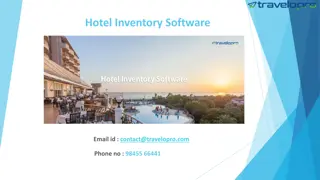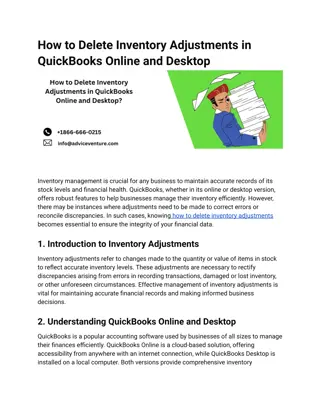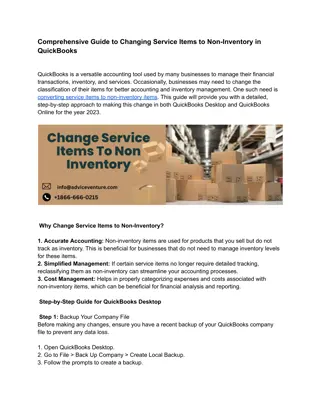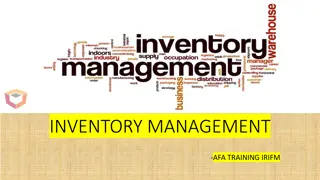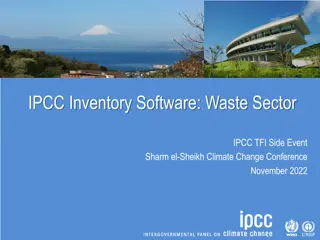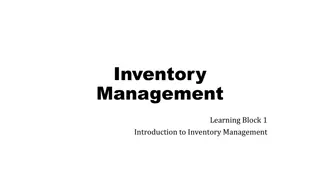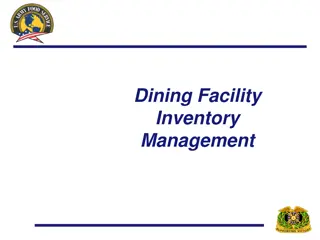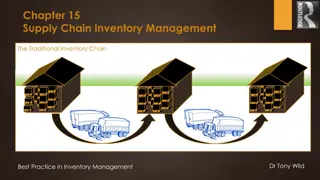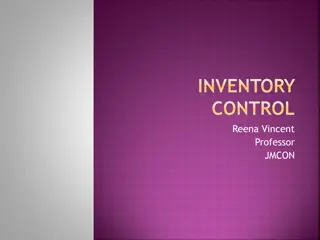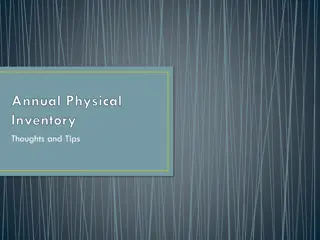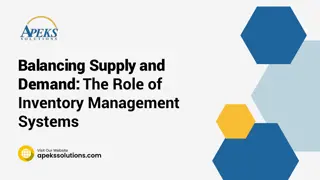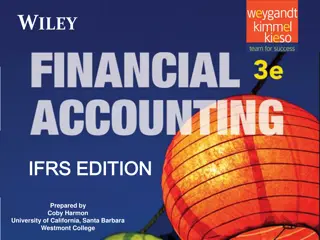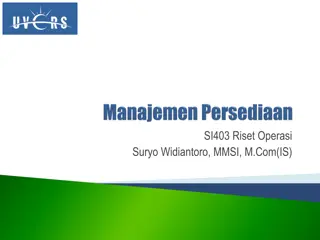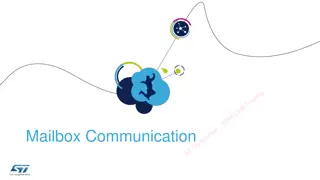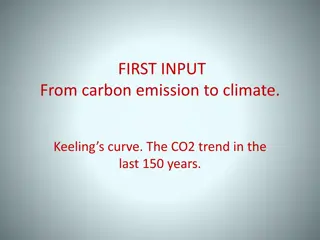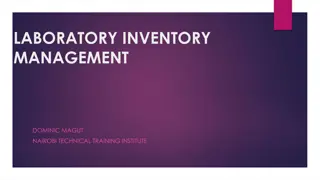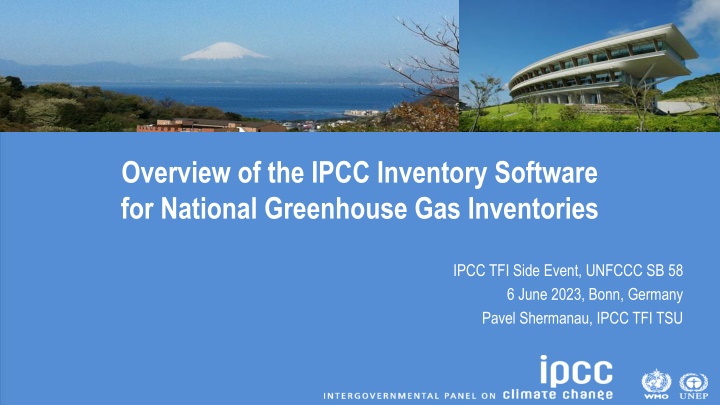
Overview of IPCC Inventory Software and Tools
The IPCC Inventory Software is a robust tool designed for National Greenhouse Gas Inventories. The latest version, 2.861, implements various Methodological Tiers and Approaches, making it versatile and user-friendly. It allows for subnational reporting, user-specific inputs, and supports different categories and sectors. The software architecture includes features for data entry, export/import, and administration functions. Ongoing work focuses on meeting Paris Agreement requirements and enhancing interoperability with UNFCCC tools.
Uploaded on | 0 Views
Download Presentation

Please find below an Image/Link to download the presentation.
The content on the website is provided AS IS for your information and personal use only. It may not be sold, licensed, or shared on other websites without obtaining consent from the author. If you encounter any issues during the download, it is possible that the publisher has removed the file from their server.
You are allowed to download the files provided on this website for personal or commercial use, subject to the condition that they are used lawfully. All files are the property of their respective owners.
The content on the website is provided AS IS for your information and personal use only. It may not be sold, licensed, or shared on other websites without obtaining consent from the author.
E N D
Presentation Transcript
Overview of the IPCC Inventory Software for National Greenhouse Gas Inventories IPCC TFI Side Event, UNFCCC SB 58 6 June 2023, Bonn, Germany Pavel Shermanau, IPCC TFI TSU
IPCC Inventory Software o IPCC Inventory Software was produced in 2012. Initially, it was designed to be a simple tool implementing only Tier 1 methods according to the 2006 IPCC Guidelines o The latest version is the version 2.861. It has been released on June 6, 2023 at the SB 58 o The version 2.861 implements the following: all Methodological Tiers & Approaches according to the 2006 IPCC Guidelines, and its Wetlands Supplement (in lilac colour) in addition, some elements of the 2019 Refinement (in magenta colour) to facilitate Interoperability with the UNFCCC CRT Reporting tool Interoperability functionality with the UNFCCC CRT Reporting tool (Energy Sector)
Version 2.861 o More features allows subnational level of reporting(e.g., tracking specific activities or regions) allows for each source/sink to use either a single methodological Tier or a mix of Tiers allows, in each equation, to input user-specific values for EFs and parameters allows different categories/sectors to be developed simultaneously implements AR5 GWP100 values (and allows any other user-specific metric to be applied) stores the entire set of information of NGHGI within a single database
Architecture Administration functions: Country, Users, Years Uncertainty analysis, KCA, Reference method Contains default data Worksheets for data entry Data Managers: *Fuel *Land Representation * Land Use *Livestock *Waste Data Export and Import Data Archive ACCDB file, backup function MSAccess (ACE OLEDB 12) for WindowsOS Microsoft .NET Framework 4.6.2
Default or User-defined process/technology Default or User- defined parameters Categories Sub-divisions Worksheets Example of a worksheet
Ongoing work o Paris Agreement requirements Indirect CO2 emissions (memo item) Indirect N2O emissions Interoperability with UNFCCC reporting tool for Common Reporting Tables (Decision 5/CMA.3) o Other Notation Keys Time series export/import Supporting tools
Guidebook - Scope o Guide to estimate anthropogenic GHG emissions and removals from each inventory category by implementing all methodological Tiers & Approaches according to the 2006 IPCC Guidelines and its Wetlands Supplement with elements of the 2019 Refinement. o Software users must be familiar with the IPCC methodologies and read the Software Manual (downloadable from the Help menu) before going through the Guidebook. The Guidebook does not replace guidance provided in the IPCC Methodology Reports
Guidebook - Structure Step A o Category by category, the Guidebook shows the workflow of data input and calculation in each worksheet when implementing any of the available IPCC methodological Tiers and Approaches to estimate anthropogenic GHG emissions/removals o Guidebook Appendices describe the use of multi- category components (e.g., Fuel manager) Fuel Manager Users Fuel list, and associated NCV/GCV and CC by Subdivision Step B Fuel Consumption Data Amount of Fuel consumed, by fuel and subdivision Tier 1-2 by Technology-Type (Tier 3) Step C Step D Results Fuel Combustion Emissions IPCC default or subdivision/technology specific EFs Emissions of each GHG (Gg)
Download https://www.ipcc-nggip.iges.or.jp/software/index.html o Version 2.861 of the IPCC Inventory Software comes alternative installation packages: 32 bit vs. 64bit. with two o Please support by using it and reporting any findings to: ipcc- software@iges.or.jp
Support o IPCC TFI TSU is supporting the IPCC Inventory Software: User Manual Help Desk: ipcc-software@iges.or.jp Pool of voluntary testers, to support software development and use Cooperation with the UNFCCC at training workshops on the use of the IPCC Inventory Software Annual IPCC meetings on feedback from software users, including issues where support is needed or software improvements are envisaged In the 7th IPCC assessment cycle (from end of July 2023) the plan and support may be subject to changes, depending on consideration by the IPCC and the new Bureau of the Task Force on National Greenhouse Gas Inventories
Thank you https://www.ipcc-nggip.iges.or.jp/software/index.html ipcc-software@iges.or.jp




